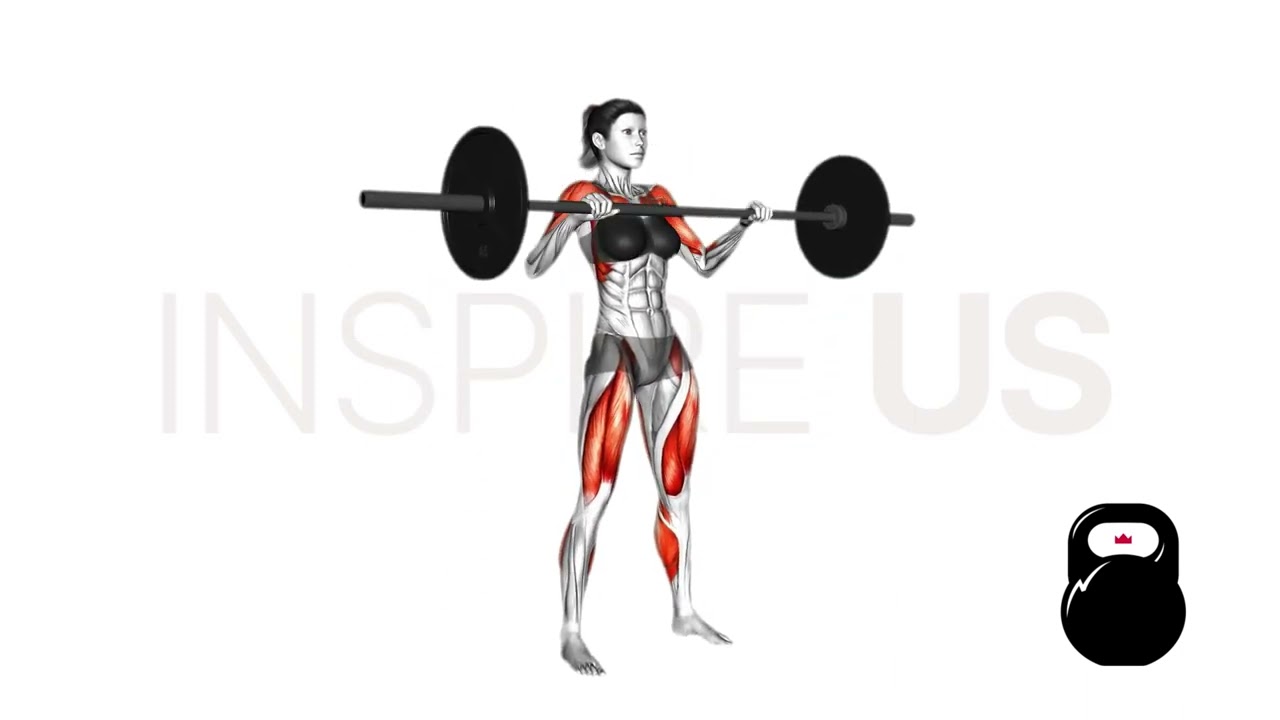Barbell Power Cleans: Benefits, Muscles Worked, and More
As iconic as it is difficult, the power clean is an undisputed component of Olympic weightlifting known for its capacity to build explosiveness and strength throughout the entire body.
But before we add the power clean to our training program, it is important to understand how best to take advantage of its many benefits - and what mistakes to avoid.
To put things in a nutshell, the power clean is a highly explosive barbell exercise that makes use of the entire body to push a barbell up to shoulder height.
Performing the movement correctly will involve a number of mechanics and major muscle groups being used, with the exercise beginning in a semi-squat power position before transitioning to a front-rack, all done in rapid succession.
What is the Power Clean?
In more technical terms, the power clean is a multi-joint compound exercise most often performed for low-volume sets due to the sheer intensity of each repetition.

Its capacity to build power and explosiveness throughout the body has made the power clean a favorite among Crossfit athletes and other forms of functional fitness training enthusiasts.
Because of the large range of motion and highly dynamic nature of the exercise, it is best programmed as the primary compound exercise of a workout, and should be performed while the muscles are relatively unfatigued and fresh.
Furthermore, the power clean’s shorter squat depth means that it can also be used as a progression to the standard clean exercise - of which is a vital component in any Olympic weightlifter’s competition lifts.
Who Should Do Power Cleans?
Power cleans require some experience in weightlifting technique, and as such are better reserved for lifters of at least an intermediate familiarity with resistance exercise. While it is entirely possible for a novice lifter to learn how to do a power clean, it is better for them to start with lighter and less complex exercises.
In particular however, athletes and lifters seeking greater explosiveness and power will receive the most benefit from performing power cleans.
Equipment Needed for Power Cleans
Power cleans will only require a barbell and set of weight plates - although the exercise can be made safer through the use of bumper plates and a platform specifically meant for Olympic weightlifting.
How to: Power Cleans
To perform a power clean, the lifter will place the loaded barbell near their shins as they squat downwards, feet set hip-width apart, hips and knees bent simultaneously and hands set wider than shoulder-width apart along the bar.
To protect the back, proper core bracing and spinal curvature must be maintained.
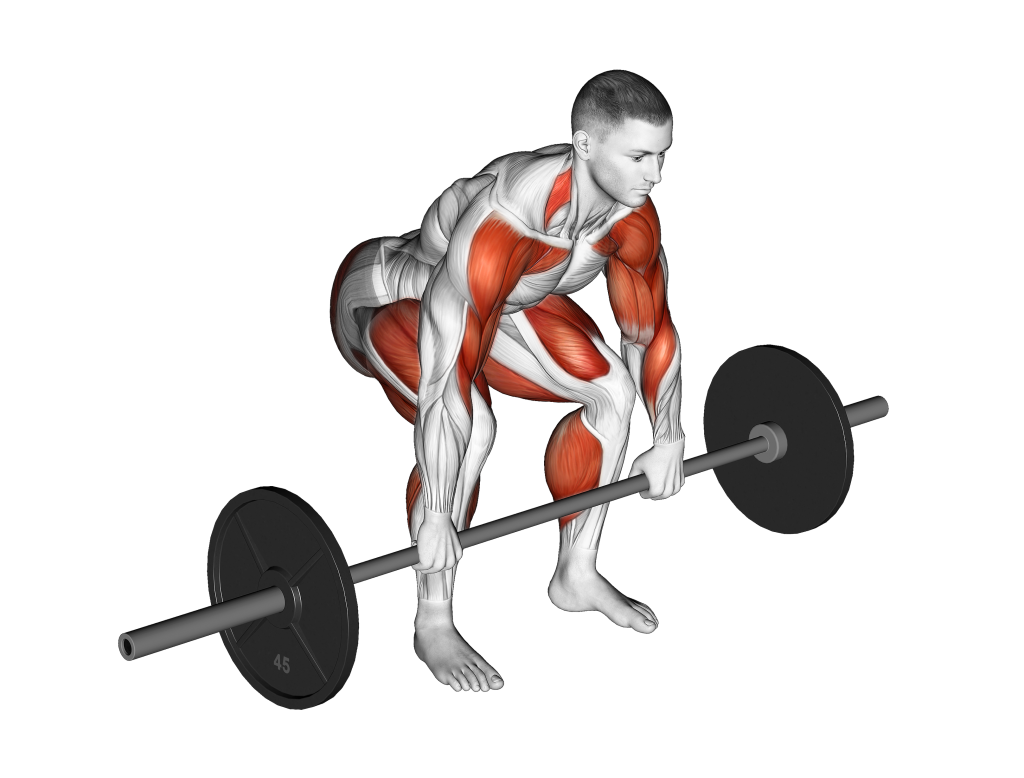
From this starting stance, they will push through the feet, extending the hips and knees as the bar leaves the ground, firmly gripped in their hands.
Once the barbell is at approximately thigh-level elevation, the lifter will then rapidly bend at the knees and thrust the hips forward, simultaneously pulling the barbell further upwards by shrugging the shoulders and drawing the elbows forward.

This entire motion should be done in a near-instantaneous manner, and is the reason why the power clean is considered to be technically complex.
Having drawn the barbell further upwards, the lifter will then enter the front rack position by squatting beneath the bar as it is in the air, drawing the elbows forward and allowing the barbell to rest atop the chest-shelf or clavicles, secured by the hands.
This phase of the exercise will appear very much like a front squat.
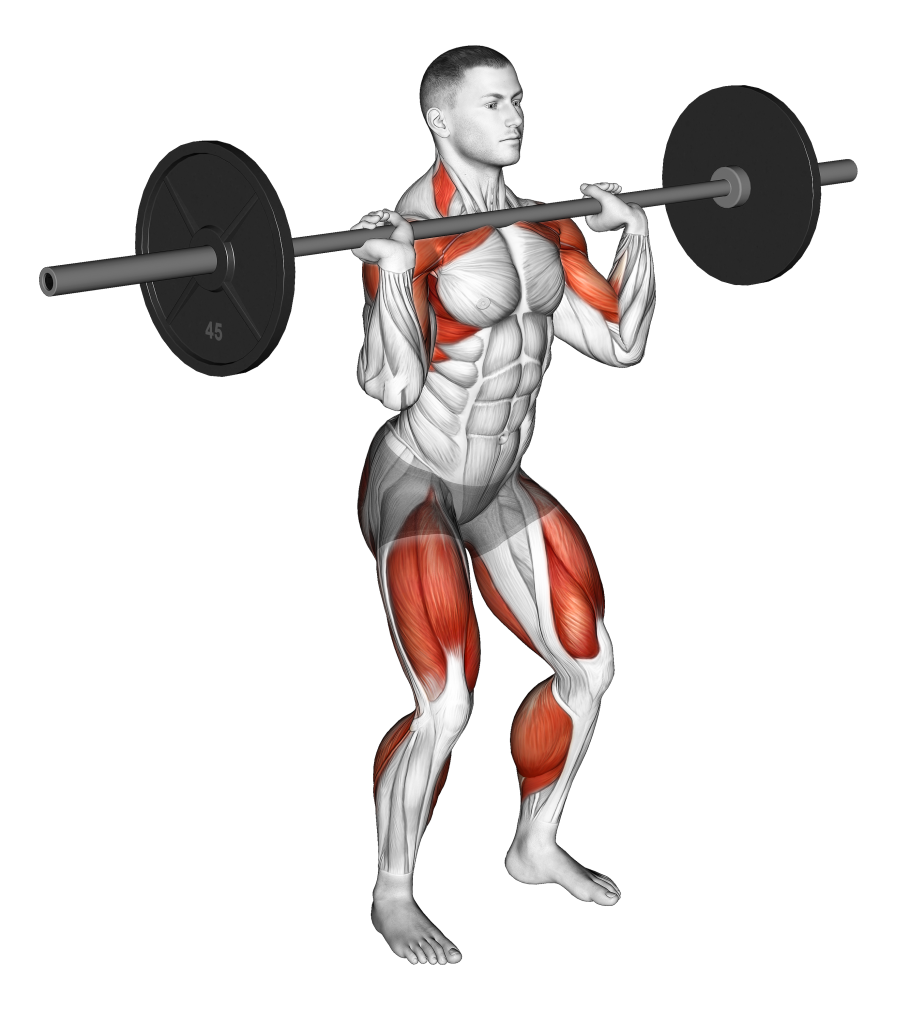
They will then rise to a fully standing position, thereby completing the exercise.
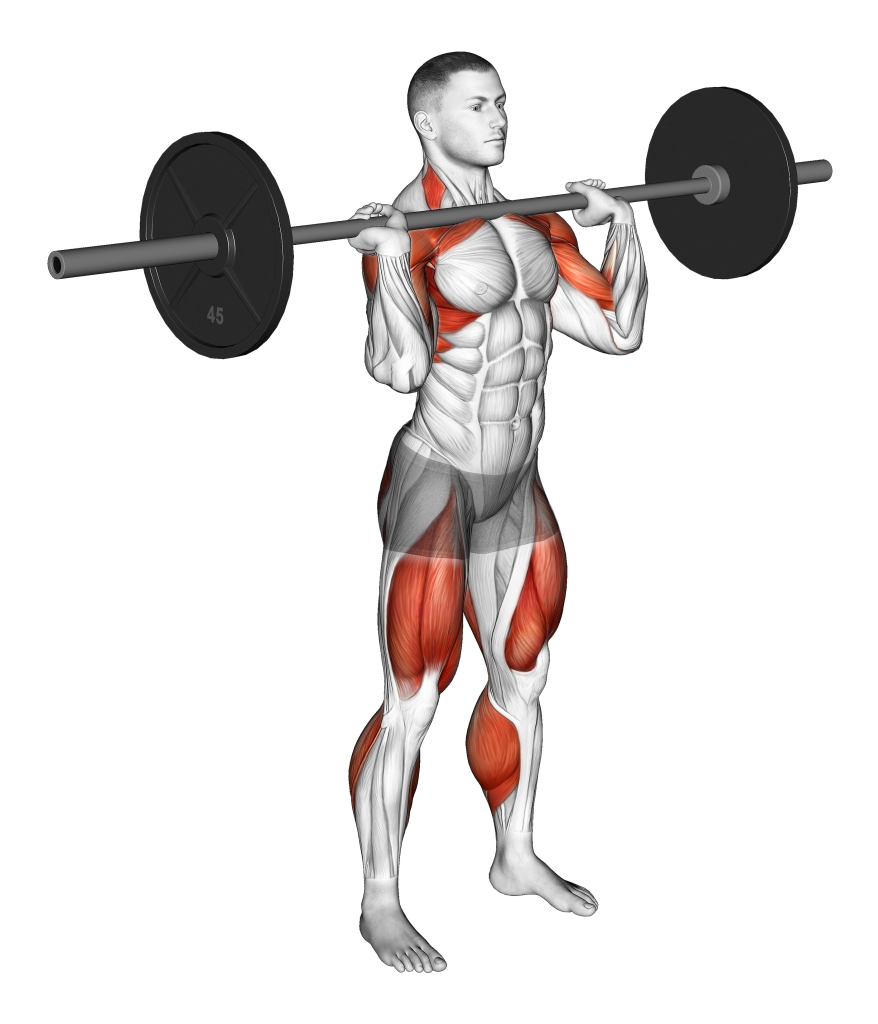
What Muscles are Worked by Power Cleans?
The power clean is the very definition of a compound exercise, meaning that it will recruit nearly every muscle group found in the body. However, not all of these muscles are worked to the same extent.
Those muscle groups that play a major role in the power clean are dubbed the primary mover muscles, and receive the greatest benefit from the exercise, whereas muscles that play a lesser role or only act in an isometric capacity are called the secondary mover muscles and stabilizers, respectively.
Primary Mover Muscles
The primary muscles used in power cleans are; the glutes, the hamstring muscles, the quadriceps, the lats, the trapezius and the muscles of the calves.
Each of these muscles are used in a highly intense and dynamic manner, meaning that it is likely they will grow stronger and larger with regular performance of the power clean.
Secondary Mover and Stabilizing Muscles
Other muscle groups worked by power cleans are; the biceps of the arms, the deltoids, the erector spinae and other core muscles, as well as certain other muscles located in the back, like the rhomboids.
What are the Benefits of Doing Power Cleans?
Apart from growing numerous muscles in both size and strength, power cleans also offer a number of other benefits that are absolutely essential for any athlete or serious weightlifter.
Full-Body Explosiveness and Power Development
While there is no doubt that power cleans are excellent for training the muscles of the body, they are more often used to develop explosiveness and power in a single highly efficient move.
Power cleans achieve this sort of training stimulus by having multiple muscle groups be recruited in a simultaneous and intense way, training the body to work cohesively while rapidly exerting force.
This particular benefit of the power clean is what makes it a favorite among functional fitness athletes, as explosiveness and power are needed in numerous types of sports.
Excellent Technique Practice for Olympic Lifting
The power clean itself is already considered an “Olympic lift”, although it is only a portion of the traditional Olympic competition lift that is the clean and jerk.
As such, it should be no surprise that in order to practice the clean portion of the competition clean and jerk, lifters will regularly perform power cleans and conventional cleans - improving both their technique and their raw athletic ability to perform during competitions.
Perfect for Athletic Carryover
Apart from Olympic weightlifting athletes, power cleans are also excellent for improving general athletic ability in all types of exercisers - even if they do not necessarily participate in weightlifting competitions.
Whether it be the need for explosiveness in a high-jumper or gross lower body strength in a climber, the power clean is included into a number of athletic training programs for its many benefits that carry over to athletic activities.
Improved Balance, Coordination, and Bodily Awareness
The power clean is highly technical, and will require more than just gross bodily power to perform.
Over time, lifters will find that regularly performing the power clean can improve not only their muscular capabilities, but also aid in maintaining their balance, help develop their coordination and generally sharpen their sense of proprioception.
Common Mistakes of Power Cleans
With how technical the power clean can be, it is no surprise that there are quite a few mistakes that even experienced lifters can make when executing the movement - all of which must be corrected in order to avoid injury or the development of poor lifting habits.
Poor Spinal Curvature or Failure to Brace the Core
The biggest mistake to make when performing the power clean is failing to protect the spine. This can either be due to allowing the lower back to bend out of neutral alignment, or otherwise by a failure to properly brace the muscles of the core.
Regardless of which is the case, doing so can easily injure the lifter’s lower back and spine. To avoid this, the core must remain properly braced and the lower back in a neutral curvature throughout the entire power clean.
Pulling the Barbell With the Arms
During the power clean, the arms and hands should only act as a method of stabilizing or securing the barbell - they should not be exerting any significant amount of directional force. Doing so can easily result in a breakdown in form, or even in the muscles of the arms being overloaded by the weight.
Most cases are due to poor wrist mobility, and as such correcting this particular mistake requires additional mobility work be performed, as well as further practice in not using the arms during the power clean.
Bar Travels Too Far From Body
Allowing the bar to either be pulled from the floor at a distance from the legs, or letting it drift away from the body can easily lead to the lifter injuring themselves.
Losing control of the barbell when entering the front-rack phase can cause balance to be lost, just as how pulling the barbell from the floor at a distance can tilt the torso forward, reducing power output and endangering the lower back.
For the safest and most effective power clean, lifters should seek to keep the bar close to the body, and always begin the exercise with the bar only a few inches away from the shins.
Allowing the Elbows to Drop During the Front-Rack Position
Often, when the lifter attempts to “catch” the barbell rather than rack it atop their chest shelf, they will unconsciously allow their elbows to point downwards, as if performing a military press. This can lead to irritation and damage to the joints of the arms, and is considered to be generally poor form.
When transitioning from the second pull to the front-rack position, it is best for the lifter to focus more on squatting beneath the barbell and “racking” it atop their clavicles, with the elbows pointing forward and the hands securing the barbell, but not necessarily moving it.
Power Clean Variations and Alternatives
For lifters seeking greater specificity or a different set of mechanics to the power clean, there are quite a number of clean exercise variations that may be employed - many of which serve their own purpose in a weightlifting program.
1. Cleans
The standard clean is nearly identical to the power clean, only with the lifter squatting lower (below parallel depth) in order to rack the bar correctly.
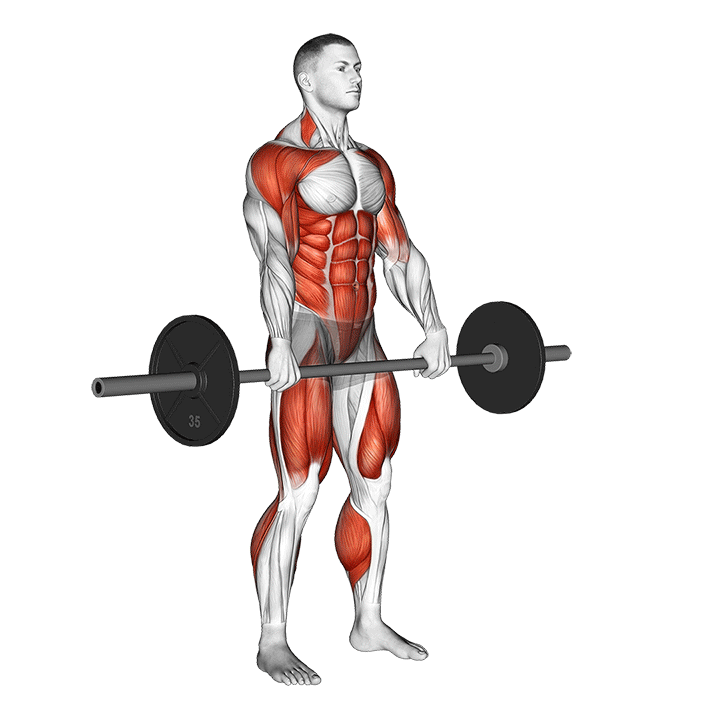
This creates a greater drive from the lower body, and produces far greater recruitment of the posterior chain due to the larger range of motion involving such muscles.
2. Clean and Jerk
The clean and jerk is the Olympic competition lift, and is considered to be the main progression of the power clean for Olympic weightlifting athletes. It involves much the same mechanics and technique as the standard power clean, but takes things a step further by adding a sort of push-press to the end of the exercise.
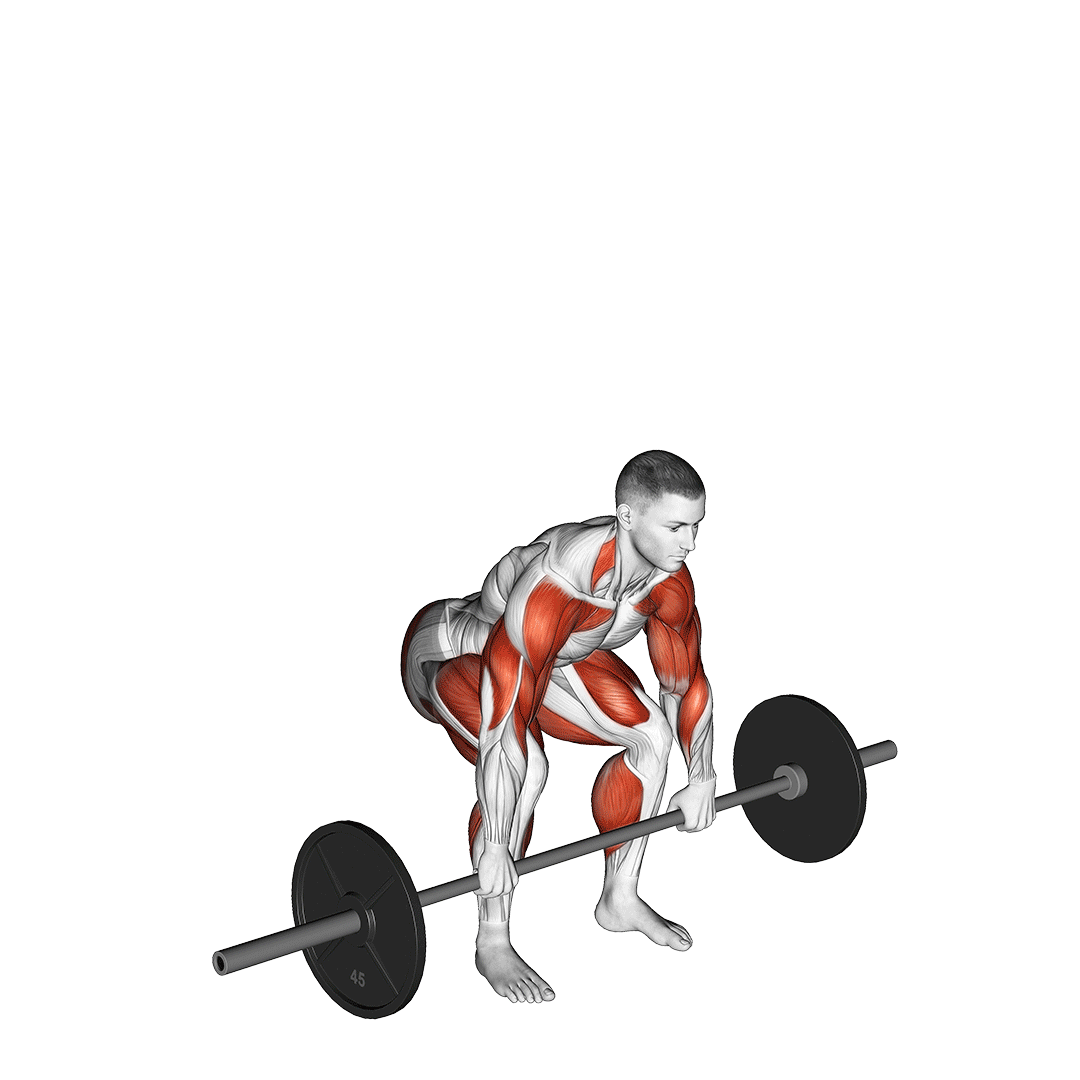
As a more difficult and even more complex movement, the clean and jerk is utilized as either a primary movement to the power clean or as a progression, once the lifter has become sufficiently skilled enough with the power clean.
3. Clean and Press
The clean and press is the closest approximation to the clean and jerk, only with a far slower and controlled overhead press, rather than a jerk of the barbell overhead.
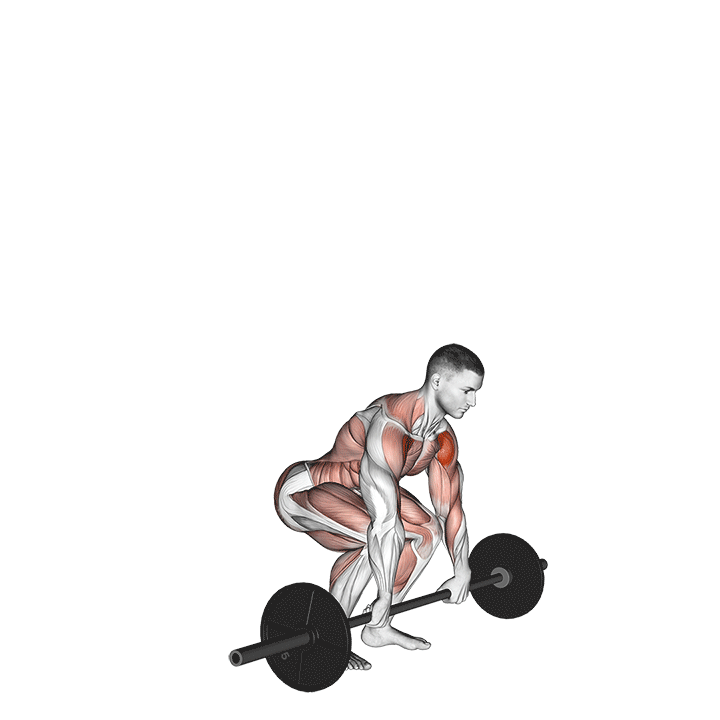
This produces greater time under tension, and enables lifters to further work their deltoids and triceps in a manner that the clean and joker or power clean cannot.
Frequently Asked Questions (FAQ)
Is the Power Clean Better Than Squats?
The power clean and the back squat are two entirely different exercises performed for distinctly different purposes. While the power clean is meant to build explosiveness, weightlifting technique and power throughout the body, the squat is instead used to develop gross strength and size in the muscles of the legs.
Although there is some overlap between the two in terms of joint usage and muscular recruitment, their overall training stimulus is quite different and as such cannot be compared.
Is it Good to Power Clean Every Day?
No - performing exercises as intense as the power clean on a daily basis can easily result in injury and overtraining.
For the best results from the power clean, lifters should only perform it as much as 3 times a week at a moderate level of intensity.
While high-level athletes occasionally do so even more often, they are under the supervision of professional coaches and medical personnel, and attempting to replicate their training may prove dangerous for the average weightlifter.
How Many Reps of Power Cleans Should I Do?
For new lifters still familiarizing themselves with power cleans, the best approach to take is performing 5-8 repetitions per set with only the empty bar.
Once the lifter has a better grasp on the technique and mechanics of the power clean, they may move on to weighted sets of 3-5 repetitions each.
In Conclusion
There is no doubt that the power clean is an extremely useful tool in any lifter’s arsenal - so long as it is performed correctly. Its frequent usage by athletes, CrossFit members and experienced weightlifters can attest to that.
But remember that the power clean is only as effective as it is allowed to be. If you are unsure of how to correctly program it - or even how to perform it - it is a good idea to seek out the advice of a professional coach.
References
1. Comfort, P., M. Allen, and P. Graham-Smith Kinetic comparisons during variations of the power clean. J Strength Cond Res. 25: 3269-3273. 2011.
2. M.L. Sams “The clean pull and snatch pull: Proper technique for weightlifting movement derivatives.” Strength Cond J. 34: 82-86. 2012.

